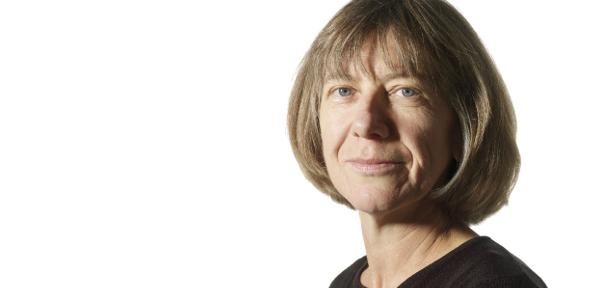
This article originally appeared in the Cambridge Alumni Magazine - CAM - Issue 64 Michaelmas 2011. Dr Joan Lasenby is a University Senior Lecturer in the Signal Processing and Communications Group of the Department of Engineering.
I don’t normally lecture in the Easter term, but on the day of the royal wedding I am standing in for a colleague and due to lecture on image processing with particular emphasis on algorithms used for photo-editing. The lecture is at 10am in the Department of Engineering; at 11am Kate will arrive at Westminster Abbey. I wonder how many students will turn up. It would be a shame, I think to myself, if they missed the lecture, as I have carefully compiled all my image processing examples using pictures of William and Kate. I need not have worried. Second year information engineers are more interested in Fourier transforms than pomp and circumstance and it is a full house. Nevertheless, I make sure I finish five minutes early so they can rush off and see Kate’s dress!
By longstanding tradition, the Signal Processing Group meets for coffee and cake at 11am on a Friday in our tea room. We, the staff, worry if our PhD students fail to show up, but cake or no, a lot of work gets done. A significant proportion of my work involves 3D reconstruction using multiple camera systems – this is the sort of technology you may associate with Hollywood blockbusters such as Lord of the Rings and Avatar. In our case, we are working alongside doctors from Addenbrooke’s Hospital and PneumaCare to investigate the feasibility of using motion capture techniques to measure breathing in classes of patients (such as babies) who cannot use conventional methods such as blowing into a mouthpiece containing a pressure sensor. Standard motion capture systems are large, difficult to set up and invasive (you need to place markers on the subject).
To solve this problem we have come up with a compact system using just two cameras and projected structured light that produces real-time dynamic reconstructions of chest wall movements and hence charts lung volume changes over time. This is a robust and easy-to-use system and clinical trials are currently under way. It is a wonderful information engineering project that presents many fascinating intellectual challenges. Fridays also mean a visit to the Pitt Building for a publishing meeting of the Cambridge University Press. I became a Syndic of the Press in October 2010 and so am something of a new girl. It is a fascinating ‘job’ involving scrutiny of all planned publications, a process rendered enlightening and entertaining by learned and quick-witted colleagues from both the University and the Press. That said, it does mean wading through about 1000 pages of material every fortnight! The CUP meeting finishes just before 4pm, at which point I have to rush to Trinity to teach. Although I read Maths at Trinity, I somehow migrated to Engineering after a brief spell in Physics and it was lovely to return to my student college as a fellow. Today’s supervisions are second year exam revision sessions. Friday afternoon is not a popular time for pre-exam supervisions, and it is a stressful time of year for the students and for me. The college system means that you have a big responsibility for your charges: you chose them, and you want to see them emerge at the other end with good results, having also done lots of the things they enjoy, and generally as mature and capable adults.
Supervisions finished, I head to Trinity gym. I have been a keen runner since the age of 12, and today it keeps me sane when things get frantic. While I’m in athletics mode, I make a mental note of all the things we need to sort out for the next academic year regarding the Cambridge University Hare & Hounds (the University’s crosscountry running club), of which I am President. Part of my research in fact involves the use of motion analysis, video analysis and signal processing for sporting projects. Could I have a better job, I ask myself?
As I drive home, I begin to look forward to a summer in which I might be able to do some research. I wonder how I survived when my children were small and I had to dash back from work to pick them up from the local after-school club that I ran; but the fact is that life doesn’t really get easier, it just changes. Those academics who feel as though their lives are full of committee meetings and administration should read James Miller’s excellent 1962 article ‘How Newton discovered the law of gravitation’ – it will both make you laugh and make you feel better!

